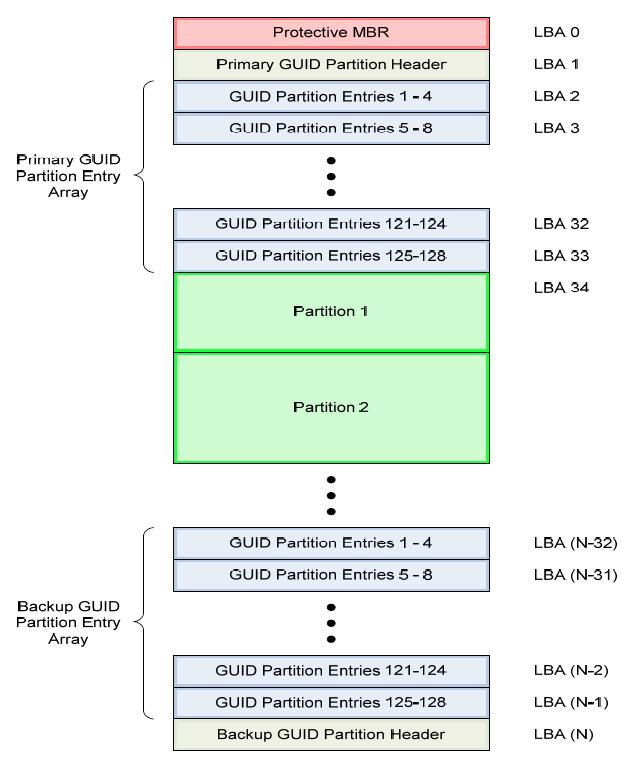Microsoft Windows 2003 introduced a new type of disk layout called GUID Partition Table (GPT) disks. This layout is designed to overcome some problems and deficiencies associated with the traditional master boot record (MBR) style disks. The advantages of GPT disks include:
- Partition size that can be up to 18 exabytes.
- A GPT disk can contain up to 128 partitions.
- Integrity of primary and backup partition tables that allows redundancy.
- Partition format that is well defined, fully self-identifying and accommodates future expansion with version number and size fields.
- Unique ID for each partition that prevents partition identifier collision.
Initially, only the IA64 (Itanium) version of Windows 2003 supported GPT disks. An IA64 system cannot boot unless the boot disk is a GPT disk. With Service Pack 1, support was added to 32-bit versions of Windows 2003, but a GPT disk is still not supported as the boot disk.
Note: The next version of Windows (currently called Longhorn or Vista) is planned to have boot-from-GPT support for 32-bit processors.
The only way to create a basic GPT disk is to convert an existing empty MBR disk. There can be no partitions or data on the disk. The Microsoft tools to convert the disk will not function if there are existing partitions.
Once you have created a GPT disk, the layout is as follows:
